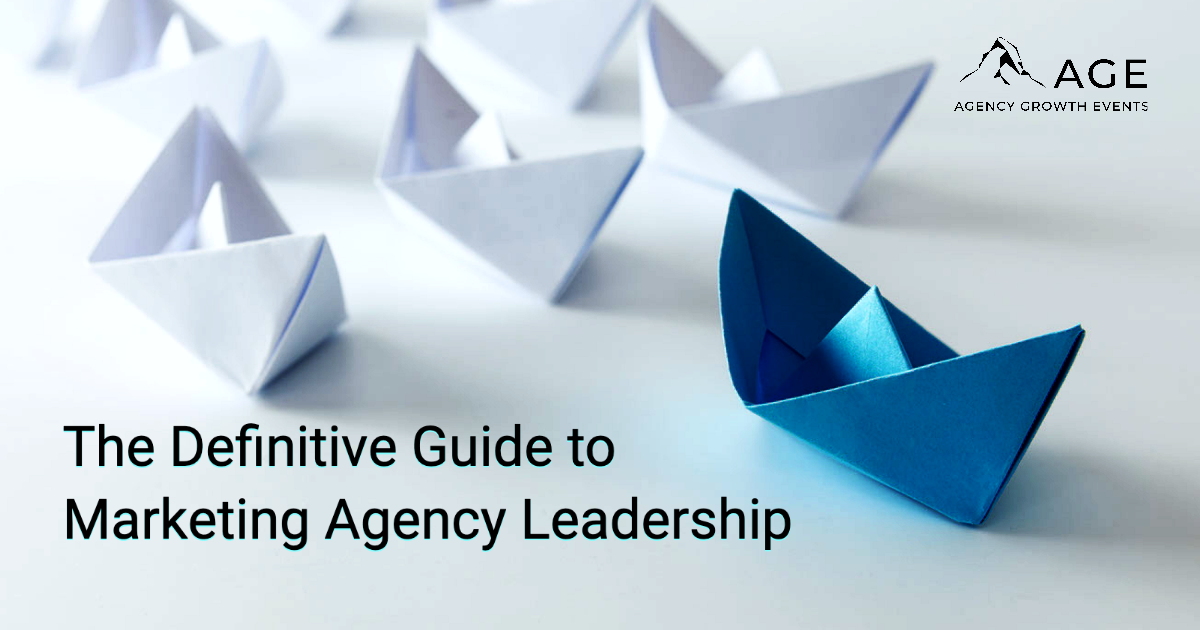What Is an Exit Plan, and Why Do I Need One for My Agency?
Surveys indicate that most agency owners believe an Exit Plan is important, but still don’t have one. If that describes you, this White Paper will help you understand what an Exit Plan is and how you can fill this risky gap.
In our 2018 National Survey on Building and Monetizing Marketing, Advertising, PR, Digital and Related Agencies, TobinLeff learned that nearly 100% of agency owners believe that an Exit Plan is an important element for their future financial security, but only 15% actually have a written Exit Plan in place. Why the big disconnect?
“There can be multiple explanations for this troubling gap – expense, lack of time, not knowing where to turn to get an Exit Plan done, and so on. However, from our experience at TobinLeff, we believe that the most important explanation may be the most basic one of all: while the idea of an Exit Plan seems to make sense, most agency owners don’t really know what an Exit Plan is. They just know that it sounds like a good idea.”
At the 30,000 foot level:
An Exit Plan is clarity
An Exit Plan is a strategic roadmap
An Exit Plan is peace of mind
Those three things, alone, speak to how important an Exit Plan is. Now let’s get a bit more down-to-earth. When we help our clients craft Exit Plans at TobinLeff, we view it as a process of Discovery, Internal Analysis, Education, and Strategy.
Discovery Phase: The exit plan begins with you
After building your business, the next hardest challenge you face as an owner is how to get out of it successfully. Remember, your exit will likely be the most important transaction you will ever make with your agency. Doesn’t it seem like a little proactive planning is in order?
As I said, the Plan begins with you. What are your personal goals and priorities for your exit:
Maximize wealth to live on in retirement?
Generate an investment to roll into another business?
Preserve your legacy?
Offer staff (or family, or partners) the opportunity to follow in your footsteps?
Restructure into a lifestyle business that you can hold onto without it holding onto you?
Or any of countless others?
What is your timeline? Do you want nothing more than to walk out the door tomorrow and never look back, or is an exit something over a distant horizon?
If you want to keep the agency in-house such as through a Management Buy-out, do you have the people in place to step up? This is an important question that goes well beyond technical skillsets. While you may have the most talented staff in the world, that doesn’t necessarily mean they can fill your shoes. As you well know, owning a business is vastly different from working for one. Often, even the folks who think they want to take on that challenge find their feet getting cold when faced with the harsh realities – and risks – of putting their own names and assets on the line. And, equally often, you, as their boss, aren’t in the best position to assess their suitability as owners.
What is your market position? In other words, what are your capabilities, what types of clients do you serve, what is your geographical reach… in short, what is your business model and how do you do business?
Exit Plan Discovery Phase Action Steps
1. Talk. Lots and lots of talk.
a. This is the time to gather general information. Conversation leads to clarification of goals and possible elimination of some options. Desired timelines are solidified.
b. If appropriate, confidential employee interviews to assess suitability for an internal deal. The timing of this step varies based on circumstances. For owners who are concerned that having a discussion that suggests they are thinking about exiting might be destabilizing, this step would be pushed later in the process. Likewise, if an internal deal is not being considered as an option, or if an outside person needs to be brought in first to become an internal acquirer, these interviews may be delayed or foregone altogether. Whenever it occurs, these are almost always conversations better conducted by an objective, outside third party.
Internal Analysis Phase: This is where you turn a hard eye inward
Look at the numbers and at what is special (or maybe a little bit weak) in your own shop.
The starting question every owner has is: What is my agency worth? And the answer is, it depends.
Begin with your most recent three years of historical financials. Recast them to normalize your own compensation to a market rate, reverse any one-time out-of-the-ordinary and any personal expenses, and come up with an adjusted EBITDA (Earnings Before Interest, Taxes, Depreciation, and Amortization) amount. Then apply an appropriate market-driven multiplier to that number, add or subtract excess working capital, and voila! – now you know exactly what your company is worth. Except, of course, you don’t.
Valuation (a subject for a future TobinLeff White Paper) is as much art as it is science. The process described in the previous paragraph will result in a valuation range for a sale to a strategic buyer, but many other factors come into play in determining your agency value. For example, internal deals often are driven more by what cash flow will fund than by an underlying statement of value, and sales to financial buyers tend to be based on a forward-looking Discounted Future Cash Flow rather than a multiple of historic EBITDA. And, of course, all of these are impacted by the uniquenesses of your agency, which leads to the question of…
Value Drivers. At TobinLeff, we’ve developed a tool that assesses an agency’s distinctive characteristics over 59 criteria spread across 16 major categories. We call these Value Drivers, and they cover a range of quantitative and qualitative ratings across topics ranging from financial strength to brand to dependency on owners to client concentration risk and 12 others. Looking at these matrices or at whatever version of this tool you might develop on your own enables you to identify what attributes you will be able to leverage most effectively in any exit negotiations, and what attributes you may need to focus on enhancing.
Exit Plan Analysis Phase Action Steps
1. Financials
a. Gather data
b. Recast and normalize financial reports
c. Apply appropriate range of valuation techniques to arrive at alternate valuation estimates
2. Value Drivers
a. Assess where you fall across spectrum from Very Strong to Very Weak for 59 Value Driver criteria
b. Obtain an overall agency Value Drivers Ranking to inform valuation, strategy, and future deal terms
Education Phase: Now that all of the groundwork has been laid, it’s time to do something with it…
And this is where the Exit Plan really starts to get interesting.
This phase involves taking the information that’s been gathered and understanding the options it reveals. Where do your goals and priorities, your timeline, your staff’s interests and aptitudes, your financial performance, and your Value Drivers intersect, and what exit routes does that intersection lead to?
The first step, of course, is understanding the potential exit paths and their respective pros and cons. Not all exit strategies are practical for every agency, and no strategy is the perfect solution. The key is to understand the possibilities and then target the one(s) that make the most sense for you.
POTENTIAL EXIT STRATEGIES TO UNDERSTAND AND CONSIDER
Sell to a strategic buyer
Sell to a financial buyer
Sell to a PE firm or investment group
Structure a Management Buy-Out
Sell to partners
Acquire companies whose leadership can be part of an MBO
Merge with the intention of a future sale
Transition to family members
Form an ESOP
Retain control and transition management to other
Exit Plan Education Phase Action Steps
1. Understand the basic structure of various exit strategies such as external sales to strategic buyers, external sales to financial buyers, management
buy-outs, etc.
2. Understand which exit strategies are possibilities for your agency and which are impractical choices
3. Understand potential firm valuation ranges now and in the future for the feasible exit strategies
4.Understand the timeline from launch to completion of feasible strategies
5. Identify a Plan A exit strategy, as well as a Plan B in case Plan A runs into roadblocks
6. If an internal deal is still on the table and key participant interviews have not yet been conducted, consider doing interviews now to evaluate the feasibility of an internal deal approach
Strategy Phase: Maximise your chances of success
Once you’ve figured out the exit path you hope to follow, it’s time to think about the best steps to maximize your chances of success and your financial return once you get to its end.
In the best case scenario, everything is already positioned perfectly for you to begin to implement your strategy on the day you’re ready to go. Unfortunately, best case scenarios are rarely real case scenarios.
The strategic section of your Exit Plan should address what you need to do to remove obstacles to bringing your Plan to fruition, as well as what steps to take to enhance the results you will enjoy when you do.
For example, if you’re set on selling to internal management but don’t have anyone on staff who’s good at driving new business, you should build in time to hire or acquire those (or other) capabilities.
If you are determined to reach a certain multiple on your valuation but your top line revenue isn’t enough to command that number, you may need to consider buying another agency to get over the threshold.
If your senior staff is critical to your value regardless of your preferred exit strategy, it may be time to implement new retention programs such as a phantom stock plan.
These are just a few of the countless issues to consider when crafting an Exit Plan. During the Strategy Phase, you should think through these so that your management of your agency going forward is proactively structured to enhance your ultimate exit goals.
Exit Plan Strategy Phase Action Steps
1. Review the results of your financial and Value Drivers analyses for strategic planning purposes
a. Compare key financial indicators to industry benchmarks to identify operational changes necessary to build future value
b. Identify weak areas in Value Drivers analysis that are most critical to strategic agency planning for strengthening future value
c. Review strength areas in Value Drivers analysis to ensure they are not at risk of deterioration
2. Develop exit implementation timeline
a. Determine date by which you want to be fully exited from business
b. Work backwards from full exit date to set progress dates in order to hit goal
Note: Keep in mind that most exit strategies take as much as one year from the start date to implement, and subsequently require your continued involvement with the agency for anywhere from one to three additional years or more
3. Begin cultivation of acquisition prospects
a. If an external sale is part of the Plan, begin now to identify your M&A advisor and to network and build a list of names of potential future acquirers
Some Final Thoughts
Your exit is simply too important – and too difficult – to leave to chance. Like any business challenge, the more you plan for it and the more intentional and proactive you are in preparing for it, the more successful it will be. Simply knowing that you want to exit someday is not enough. You need to know how you want to exit and have a plan in place to get you there.
In summary, the key elements of an Exit Plan are:
Your exit goals and objectives
Exit date target
Understanding of your business
Value Drivers analysis
Financial benchmarks analysis and valuation estimate
Key employees interview results (optional)
Identification of primary and secondary exit structures (e.g., Plan A and Plan B)
Strategies for maximizing exit success
Implementation timeline
Can you do this on your own or by working with your attorney or accountant? Yes. Is that the ideal approach? We don’t think so. Like marketing or law or accounting, exit planning is its own discipline with its own experts. It’s not enough simply to know the mechanics of putting a deal together. For you to truly maximize your results from the most important transaction of your career, it’s critical to have someone who understands your industry’s marketplace, who has implemented exits for marketing and related agencies, and who has dealt with and overcome the obstacles that are most likely to arise. For analyzing your value and potential sale multiples, knowing how you compare to industry performance benchmarks, understanding what type of buyer would find you interesting and who wouldn’t, etc., it’s beyond helpful to have an advisor who deals with these types of questions every day.
However you decide to develop your Exit Plan, the time to begin is now. As mentioned above, the exit process can take as long as 4-6 years once you decide to move forward. The sooner you begin to plan for that process, the more likely it is that you will be pleased with the results.
About the author: Scott Leff
Scott has owned and run advertising, marketing, PR, and video production shops. He has led mergers and sales of for-profit and non-profit corporations, run and sold a family-owned bank, produced a national PBS documentary, was President of a Carnegie Mellon University spin-out technology company, ran a $1.3 billion trust and investment management company, and spent close to a decade with Robert Morris University developing strategic plans, doing governance interventions, and performing financial analyses for nonprofit organizations of all types and sizes.
Did you miss Scott Leff at Agency Growth Events Season ONE?
Livestreamed over three virtual events in Q4 of 2021, Agency Growth Events brought together experts from the worlds of Digital Agencies, Media, and Management Consulting to talk about How to Grow a Digital Agency.
Watch “What is an EXIT plan and why do you need one?” by Scott Leff, TobinLeff.
Thinking of selling your digital agency? Start with a detailed business plan, outlining your current situation and projections for the future. Consider recruiting a legal and financial expert to advise you on the best way to move forward. There's a lot to think about - but with proper planning, you can make sure everything runs smoothly!
Check out these videos from our Planning Until Your Exit Session from the Agency Growth Book Launch Event:
📌 I’m An Agency Owner Get Me Out Of Here! - Jonathan Leafe
📌 6 Tips To Consider Before You Sell Your Agency - Clodagh Higgins











